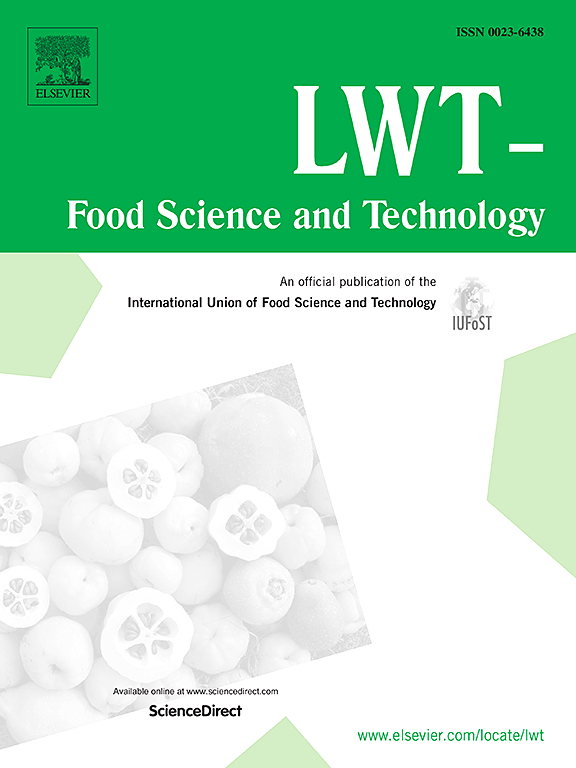Probiotics fermentation improves physicochemical properties, bioactivity, and flavor quality of malus toringoides fruit juice
IF 6
1区 农林科学
Q1 FOOD SCIENCE & TECHNOLOGY
引用次数: 0
Abstract
Malus toringoides (Rehd) Hughes (MT) is a promising resource for developing prebiotic beverages due to its numerous health benefits. This study investigates the volatile flavor compounds and sensory attributes of MT fermented with various probiotics (Zygosaccharomyces rouxii, Saccharomyces cerevisiae, Lactiplantibacillus plantarum, Lacticaseibacillus paracasei) by headspace-gas chromatography-ion mobility spectrometry (HS-GC-IMS), headspace solid-phase microextraction-gas chromatography-mass spectrometry (HS-SPME-GC-MS) and electronic sensory evaluation methods. In addition, the changes of physicochemical characteristics, functional components in MT were determined, and the antioxidant activity was evaluated. HS-GC-IMS and HS-SPME-GC-MS revealed a significant enhancement in both the diversity and concentration of volatile compounds following fermentation, especially aromatic compounds such as alcohols and esters. The combination of PLS-DA and VIP analysis further screened the differential compounds in different probiotics-fermented MT. The total flavonoids and phlorizin were increased after fermented, which significantly improved the antioxidant activity of MT. Additionally, following fermentation, there were alterations in both the quantity and variety of organic acids; lactic acid saw the most significant increase (3.49–5.52 mg/mL), while malic acid experienced a reducti on of nearly 50 %. The sensory evaluation revealed that the results of sensory evaluation showed that MT was better in aroma and overall acceptability after Saccharomyces cerevisiae fermentation, while fermentation with Lactiplantibacillus plantarum and Lacticaseibacillus paracasei were more favored in taste. These findings suggest that probiotics fermentation effectively enhances the flavor quality and biological activity of MT, indicating its potential for market viability.
求助全文
约1分钟内获得全文
求助全文
来源期刊

LWT - Food Science and Technology
工程技术-食品科技
CiteScore
11.80
自引率
6.70%
发文量
1724
审稿时长
65 days
期刊介绍:
LWT - Food Science and Technology is an international journal that publishes innovative papers in the fields of food chemistry, biochemistry, microbiology, technology and nutrition. The work described should be innovative either in the approach or in the methods used. The significance of the results either for the science community or for the food industry must also be specified. Contributions written in English are welcomed in the form of review articles, short reviews, research papers, and research notes. Papers featuring animal trials and cell cultures are outside the scope of the journal and will not be considered for publication.
 求助内容:
求助内容: 应助结果提醒方式:
应助结果提醒方式:


